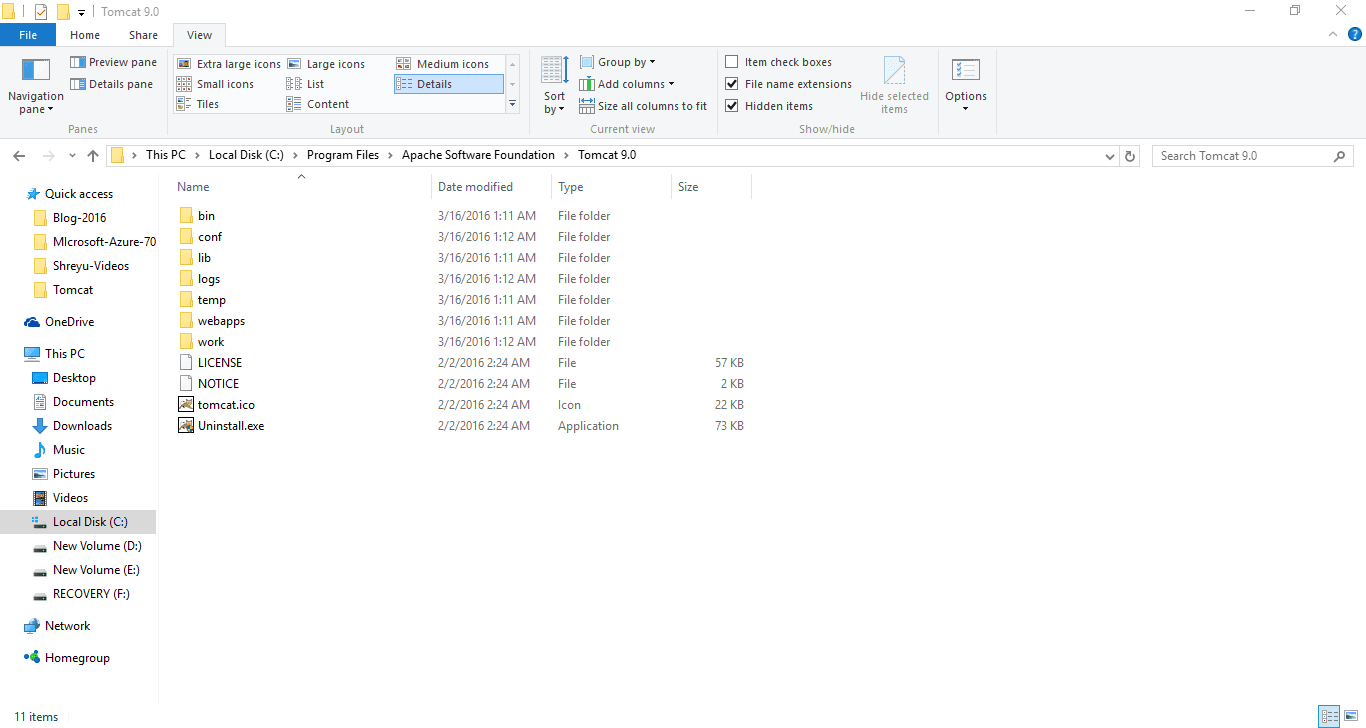Centos Install Tomcat Manager

Contents • • • • • • • • • • • • Learn to Install Tomcat 7 on CentOS, RHEL, or Fedora Apache Tomcat is a web server and servlet container that is used to serve Java applications. Tomcat is an open source implementation of the Java Servlet and JavaServer Pages technologies, released by the Apache Software Foundation. Tomcat 7 implements the JavaServer Pages 2.2 and Servlet 3.0 specifications and a number of new features.
The Manager application also has a new look and finer-grain roles and access than 6.x In this Tutorial, we will install Tomcat 7, the new JDK 7, configure Tomcat as a service, create a start/stop script, and (optionally) configure Tomcat to run under a non-root user. Export PATH • Once you have added the above to ~/.bash_profile, you should log out, then log back in and check that the JAVA_HOME is set correctly. Note: If you decided to use JDK 6 rather than 7 as we did above, simply save the JDK 6 bin file to /opt (or another location), then navigate to /usr/java and issue: ‘sh /opt/jdk-6u33-linux-x64.bin’. This will create a JAVA Home of /usr/java/jdk1.6.0.33 Step 2: Download and Unpack Tomcat 7.0.29 (or latest) [myinlink sub=”How to Install Tomcat 7 on CentOS, RHEL, or Fedora” link=”Tomcat 7 on CentOS, RHEL, or Fedora[/myinlink] • We will install Tomcat 7 under /usr/share, Switch to the /usr/share directory.
How To Install Apache Tomcat 8 on CentOS 7. The easiest way to install Tomcat 8 at this time is to download the. Sudo vi /opt/tomcat/webapps/manager/META-INF.
Exit 0 • The above script is simple and contains all of the basic elements you will need to get going. • As you can see, we are simply calling the startup.sh and shutdown.sh scripts located in the Tomcat bin directory (/usr/share/apache-tomcat-7.0.29/bin). • You can adjust your script according to your needs and, in subsequent posts, we’ll look at additional examples. • CATALINA_HOME is the Tomcat home directory (/usr/share/apache-tomcat-7.0.29) Now, set the permissions for your script to make it executable.
[ root @ srv6 init. D ] # more /usr/share/apache-tomcat-7.0.29/logs/catalina.out • We can now access the Tomcat Manager page at: or and we should see the Tomcat home page. Samsung Syncmaster Sa300 Driver Xp. • Tomcat 7 contains a number of changes that offer finer-grain roles. • For security reasons, no users or passwords are created for the Tomcat manager roles by default. In a production deployment, it is always best to remove the Manager application. • To set roles, user name(s) and password(s), we need to configure the tomcat-users.xml file located at $CATALINA_HOME/conf/tomcat-users.xml.
• In the case of our installation, $CATALINA_HOME is located at /usr/share/apache-tomcat-7.0.29. • By default the Tomcat 7 tomcat-users.xml file will have the elements between the and tags commented-out. • New roles for Tomcat 7 offer finer-grained access and The following roles are now available: • manager-gui • manager-status • manager-jmx • manager-script • admin-gu • admin-script. • We can set the manager-gui role, for example as below. & lt; / tomcat - users & gt; • Caution should be exercised in granting multiple roles so as not to under-mind security. Step 5 (Oprtional): Manage Memory Usage Using JAVA_OPTS. # the License.
You may obtain a copy of the License at Step 6 (Optional): How to Run Tomcat using Minimally Privileged (non-root) User. In our Tomcat configuration above, we are running Tomcat as Root. For security reasons, it is always best to run services with the only those privileges that are necessary.
There are some who make a strong case that this is not required, but it’s always best to err on the side of caution. [myinlink sub=”How to Install Drupal 8 On CentOS 7″ link=”Drupal 8 on CentOS 7[/myinlink] To run Tomcat as non-root user, we need to do the following: 1. Create the group ‘tomcat’.
Exit 0 Step 7 (Optional): How to Run Tomcat on Port 80 as Non-Root User. [myinlink sub=”How to Install Oracle VirtualBox On Ubuntu 16.04 Headless Server” link=”Oracle VirtualBox On Ubuntu 16.04 Headless Server[/myinlink] Note: the following applies when you are running Tomcat in “stand alone” mode with Tomcat running under the minimally privileged user Tomcat we created in the previous step. To run services below port 1024 as a user other than root, you can add the following to your IP tables. [ root @ srv6 ~ ] # iptables -t nat -A PREROUTING -p udp -m udp --dport 80 -j REDIRECT --to-ports 8080 • Be sure to save and restart your IP Tables.
Step 8 (Optional): Running Tomcat behind Apache As an alternative to running Tomcat on port 80, if you have Apache in front of Tomcat, you can use mod_proxy as well as ajp connector to map your domain to your Tomcat application(s) using an Apache vhost as shown below. While Tomcat has improved it’s ‘standalone performance’, I still prefer to have Apace in front of it for a number of reasons. In your Apache config, be sure to set KeepAlive to ‘on’.